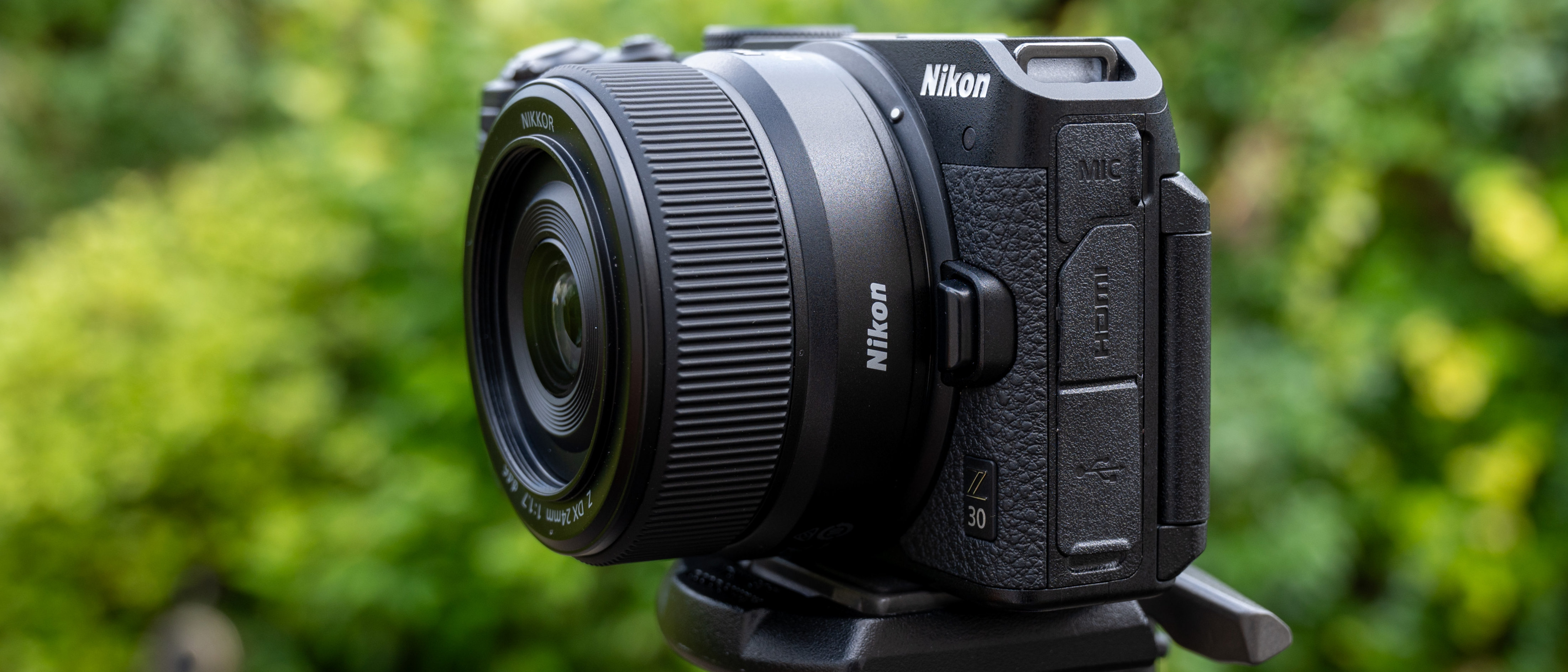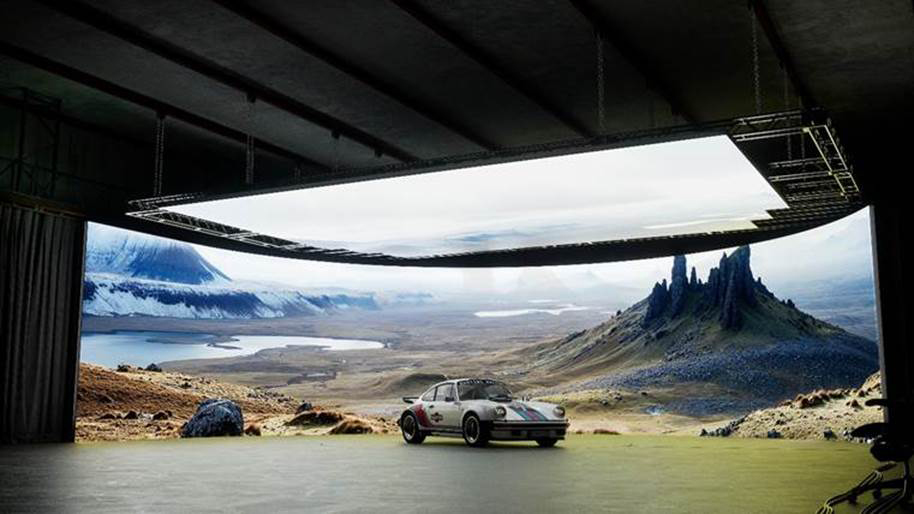Digital Camera World Verdict
With its compact and lightweight construction, and an ‘effective’ 36mm focal length in full-frame terms, this lens is the perfect companion to any Nikon Z DX camera body, ideal for street photography and walkabout shooting. Its bright aperture helps to enable a tight depth of field for close-ups, as well as quick shutter speeds even under low lighting conditions. All in all, it’s a very versatile lens with impressive performance at a competitive price.
Pros
- +
Compact and lightweight
- +
Fast f/1.7 aperture
- +
Useful 36mm ‘effective’ focal length
Cons
- -
Plastic mounting plate
- -
No optical stabilization
- -
Not fully weather-sealed
Why you can trust Digital Camera World
The Nikon Z DX 24mm f/1.7 is Nikon’s first DX (APS-C format) prime lens specifically for cameras like the Z 30, Z 50 and Z fc. Thanks to the 1.5x crop factor of Nikon (and most other) APS-C format cameras, it gives a pretty much identical field of view to 35mm lenses that full-frame photographers typically favor for street photography. Indeed, the compact build helps for candid shooting on the streets, so you can be discreet and avoid drawing attention to yourself.
Naturally, you can also use FX (full-frame compatible) lenses on DX format Z system bodies. Indeed, Nikon offers the Nikon Z 28mm f/2.8 SE as a kit lens option with the Z fc camera. That lens is barely any bigger or heavier, but it naturally has a less generous angle of view, equating to a 42mm focal length in full-frame terms. Despite being marginally smaller and lighter, the Z DX 24mm is 1.5 f/stops faster. That’s mainly because it only needs to produce a relatively small image circle, sufficient to cover an APS-C format image sensor.
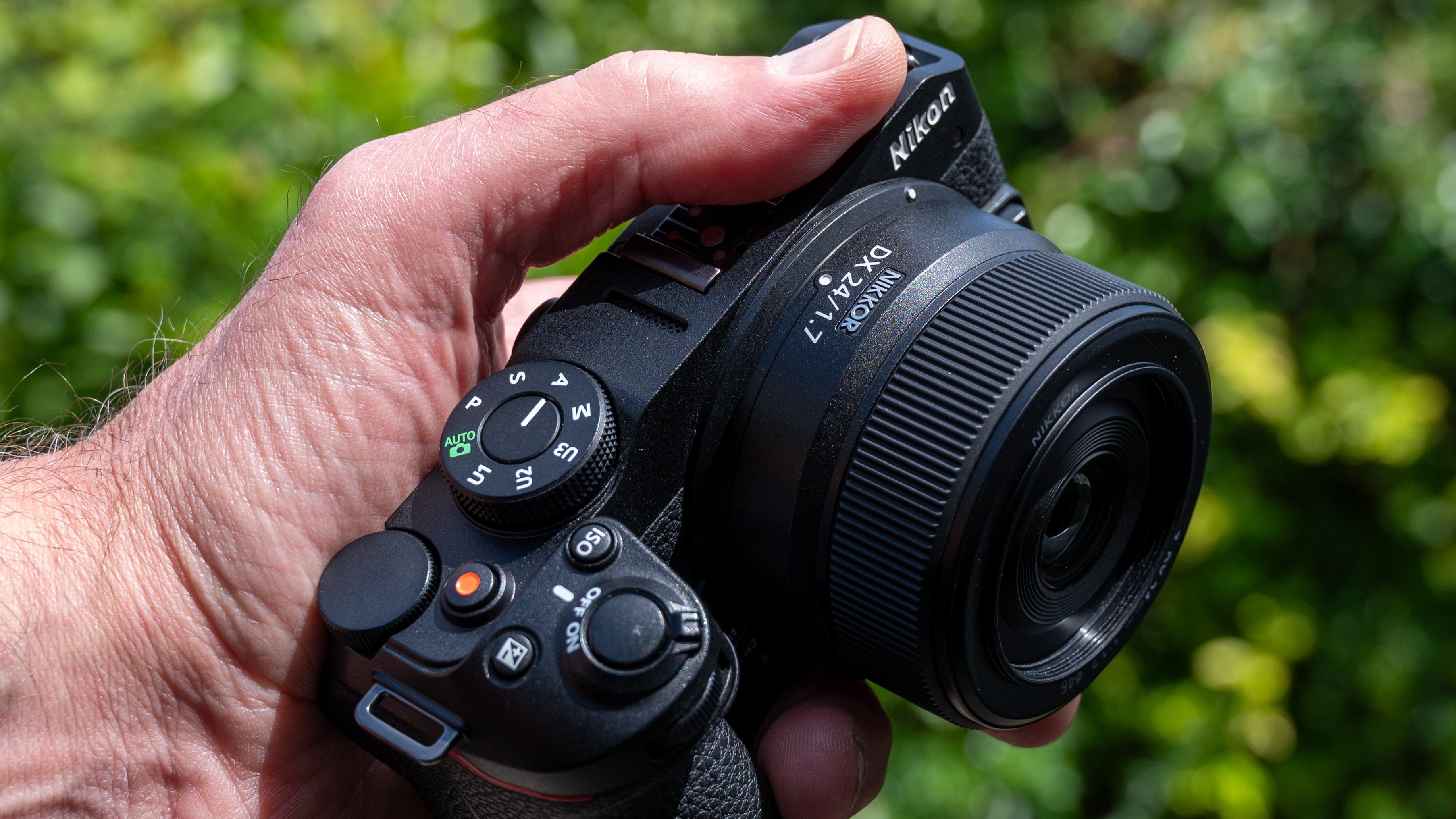
While this is the first prime lens that Nikon has launched specifically for DX format Z system cameras, it’s not the only party in town. Capable competitors include the similarly priced Viltrox AF 13mm, 23mm, 33mm and 56mm lenses, all with faster f/1.4 aperture ratings. There’s also a trio of more expensive DX format Sigma 16mm, 30mm and 56mm DC DN | Contemporary options, also with f/1.4 aperture ratings.
Specifications
Mount: Nikon Z (DX)
Full-frame: No
Autofocus: Yes
Stabilization: No
Lens construction: 9 elements in 8 groups
Angle of view: 61 degrees
Diaphragm blades: 7
Minimum aperture: f/11
Minimum focusing distance: 0.18m
Maximum magnification ratio: 0.19x
Filter size: 46mm
Dimensions: 70x40mm
Weight: 135g
Key features
The standout key feature of this lens is its relatively fast f/1.7 aperture. Shoot with the Nikon Z DX 16-50mm f/3.5-6.3 VR zoom at the equivalent 24mm focal length and the widest available aperture is f/4.2. That’s just over 2.5 f/stops slower. The upshot is that the Z DX 24mm enables much faster shutter speeds if you’re shooting indoors or at twilight, without the need to bump up your camera’s ISO setting to noise-inducing levels.
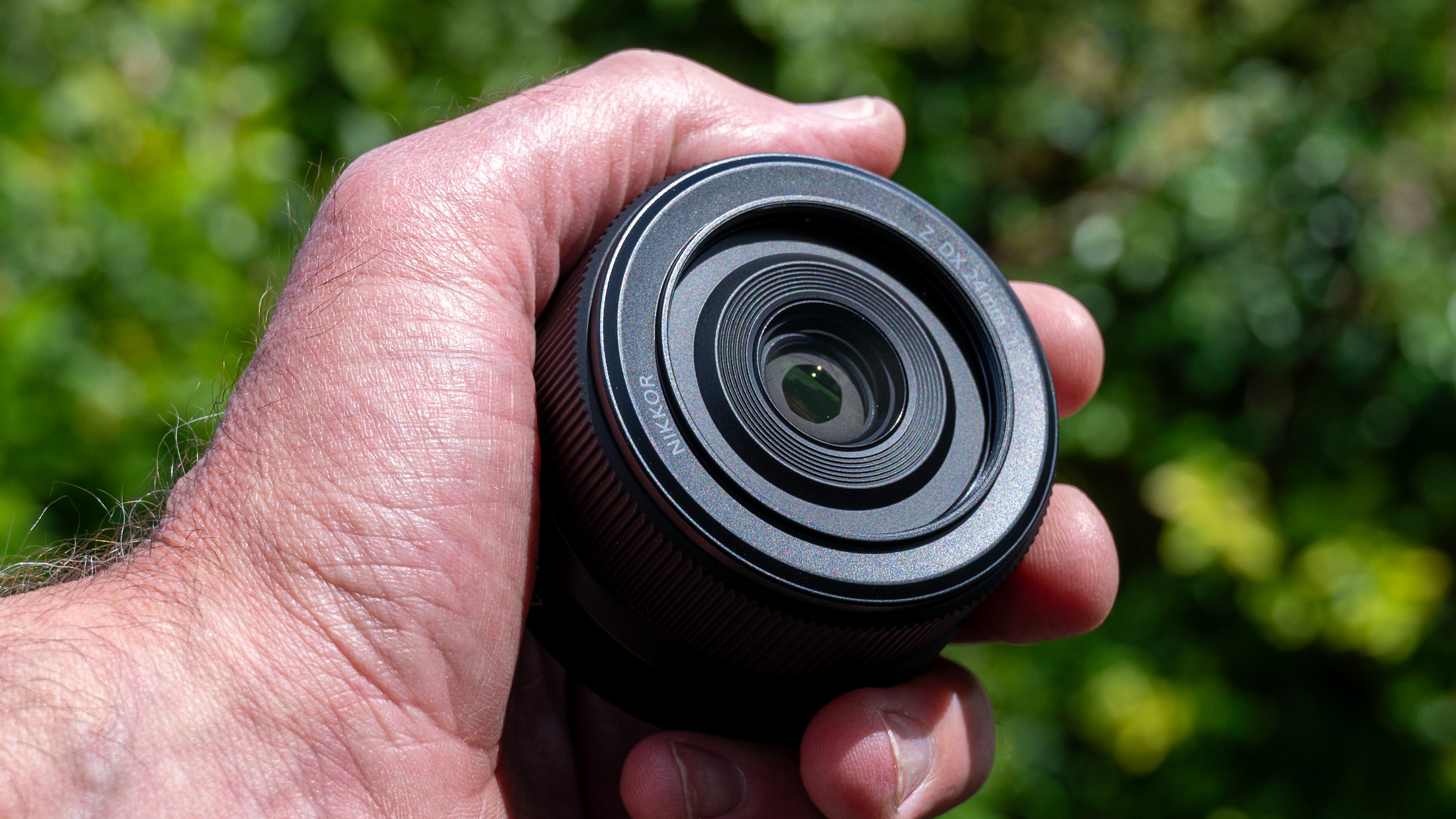
The other main bonus of the ‘faster’ prime is that you can get a much tighter depth of field. This helps to isolate the main subject in a scene by blurring the background. Depth of field itself is defined more by the ‘actual’ rather than ‘effective’ focal length of a lens, so it can still be a struggle to get a tight depth of field at 24mm in most shooting scenarios. However, the combination of the lens’s focal length and aperture does enable a tight depth of field for close-ups.

And speaking of close-ups, the lens features a short minimum focus distance of just 18cm (4.7 inches), so you really can get up close and personal. That delivers a maximum magnification ratio of 0.19x, which is pretty generous for this type of lens.
Build and handling
Build quality feels pretty convincing, despite the lens weighing in at just 135g. If you like travelling light, that’s good news compared with the competing Viltrox AF 23mm f/1.4 Z, which is more than twice the weight at 300g. A key factor is that the Nikon is made from plastic, right down to and including its mounting plate, whereas the Viltrox has a full metal jacket and mount. The Nikon is also only a little more than half the physical length of the Viltrox, at 40mm compared with 73mm.
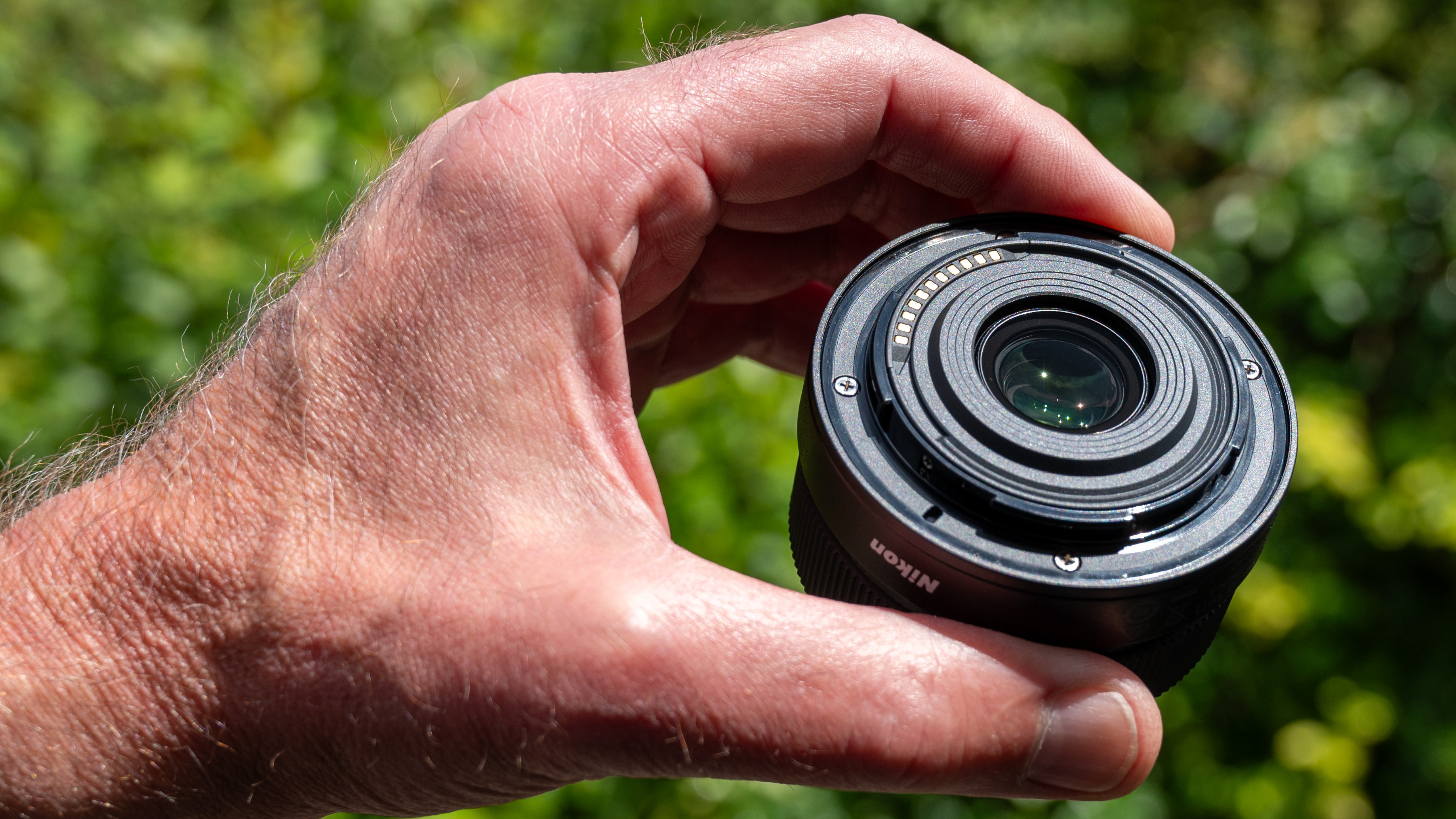
The choice of a lightweight plastic mounting plate is actually quite common and is featured in all of Nikon’s current Z DX lenses, including the Z DX 12-28mm, 16-50mm, 18-140mm and 50-250mm zooms, as well as the lightweight Z 28mm and Z 40mm full-frame compatible primes.
Typically for Nikon Z system lenses, the DX 24mm has a stepping motor-based autofocus system which is quick for stills and delivers smooth, near-silent autofocus transitions when shooting video. Another bonus for video capture is that, again like other Z system lenses, this one is optimized to produce negligible focus breathing when altering the aperture setting.
In keeping with the small size, there are no physical switches on the lens barrel, so swapping between autofocus and manual focus modes needs a quick dip into the camera body’s ‘i’ menu. On the upside for handling, the lens is compatible with the usual customization options for the electronically coupled focus ring, when in autofocus mode. As such, you can assign it to autofocus override or other functions like control over aperture, ISO and exposure compensation.
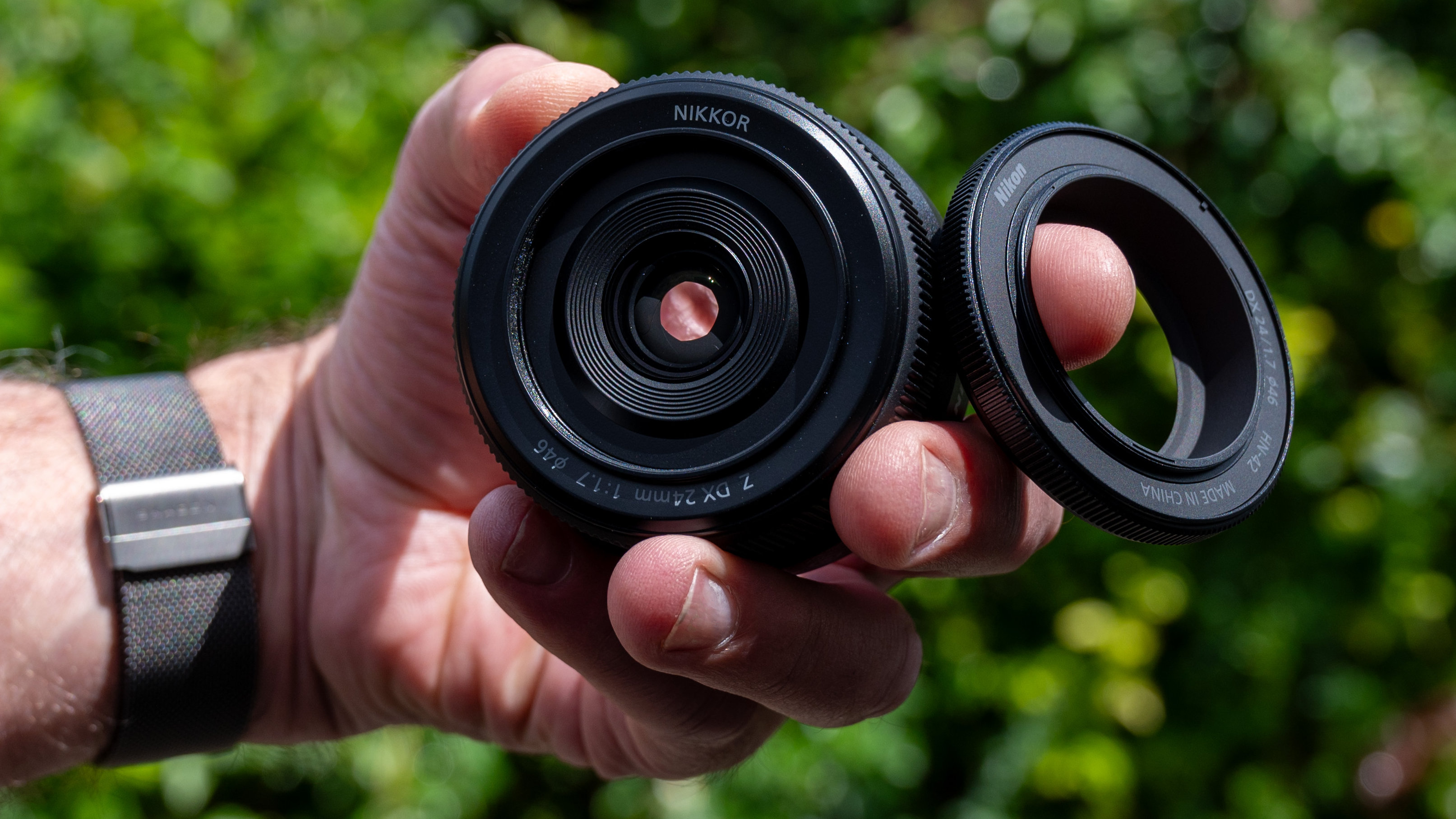
The lens isn’t fully weather-sealed, unsurprisingly considering the price tag, but the construction is at least dust/drip-resistant and has a rubber weather-seal ring around its mounting plate. More surprisingly, it comes complete with a lens hood, which is something of a rarity for Nikon’s low-budget lenses (the same goes for Canon). It’s an HN-42 hood in this case, which has a circular rather than petal-shaped profile, and screws into the lens’s 46mm filter attachment thread rather than being a bayonet-fit type.
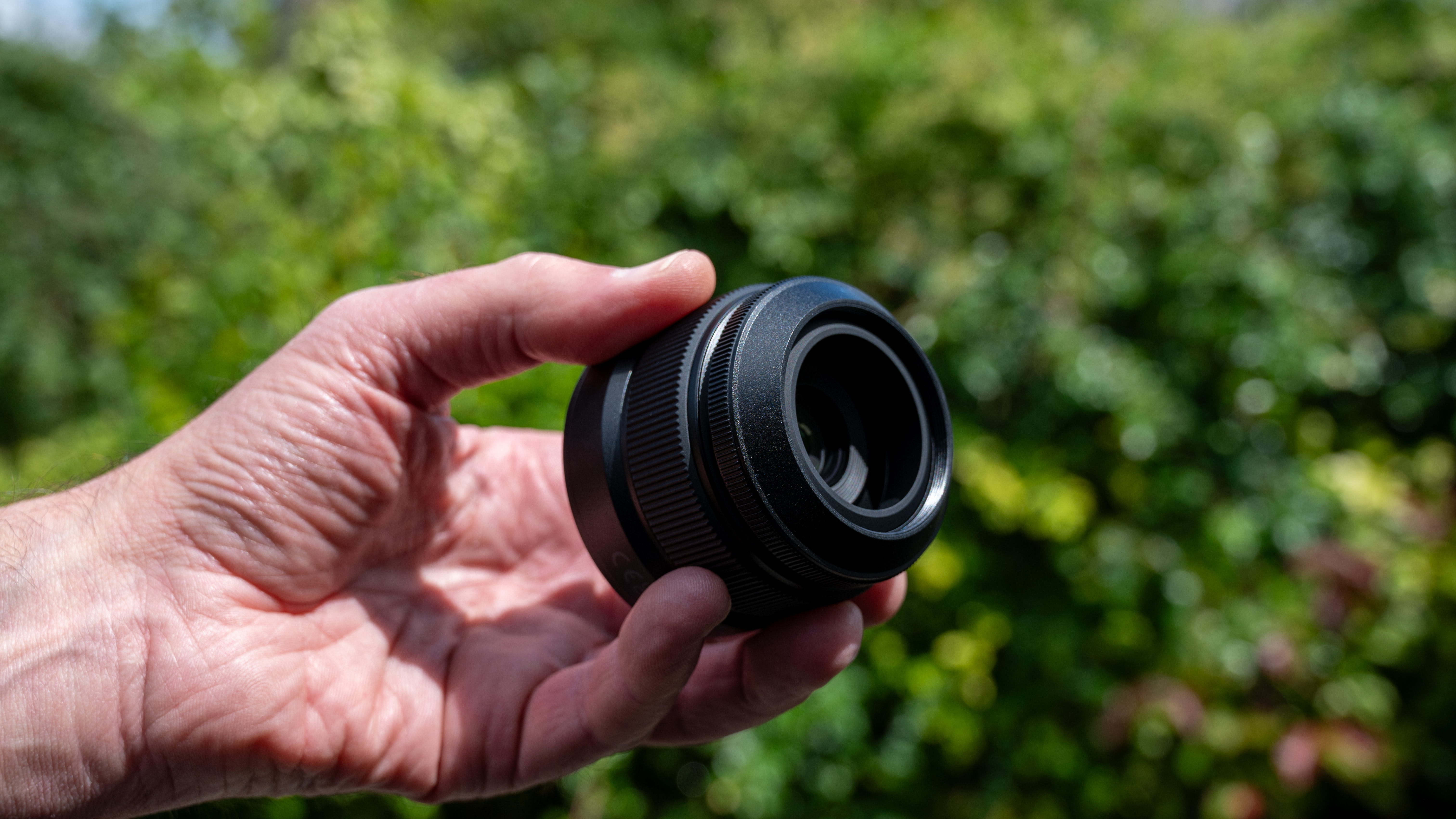
Performance
We’re yet to see an own-brand Nikon Z system lens that’s anything other than impressive, and the Z DX 24mm follows suit. Autofocus is quick and consistently accurate. In our real-world tests, we found center-sharpness to be pretty good even wide-open at f/1.7, and very good at f/2.8 at narrower apertures. Sharpness towards the edges and corners of the frame are comparatively lackluster at f/1.7 comes on song at f/4. The lens’s sweet spot spans apertures of f/4 to f/5.6.
Although the fast aperture enables quick shutter speeds under low lighting, there’s no optical VR (Vibration Reduction). Given the lack of in-body stabilization in all of Nikon’s Z DX format cameras, that can be an issue if you want to use narrower apertures under low lighting, to extend your depth of field. Speaking of which, the narrowest aperture available is a mere f/11, rather than the more usual f/16 or f/22.
Contrast and clarity remain very good even when shooting wide-open, despite the absence of any ED (Extra-low Dispersion) glass. The lens does have two aspherical elements, which help to keep the size and weight to a minimum, as well as minimizing various aberrations. Typically, automatic in-camera corrections are available for color fringing, distortion and vignetting. With the corrections disabled, pincushion distortion can be noticeable and vignetting is quite apparent at f/1.7. Even so, the lens is certainly entirely usable with in-camera corrections switched off, unlike many recent lenses designed for mirrorless, for which distortion correction can’t be disabled.
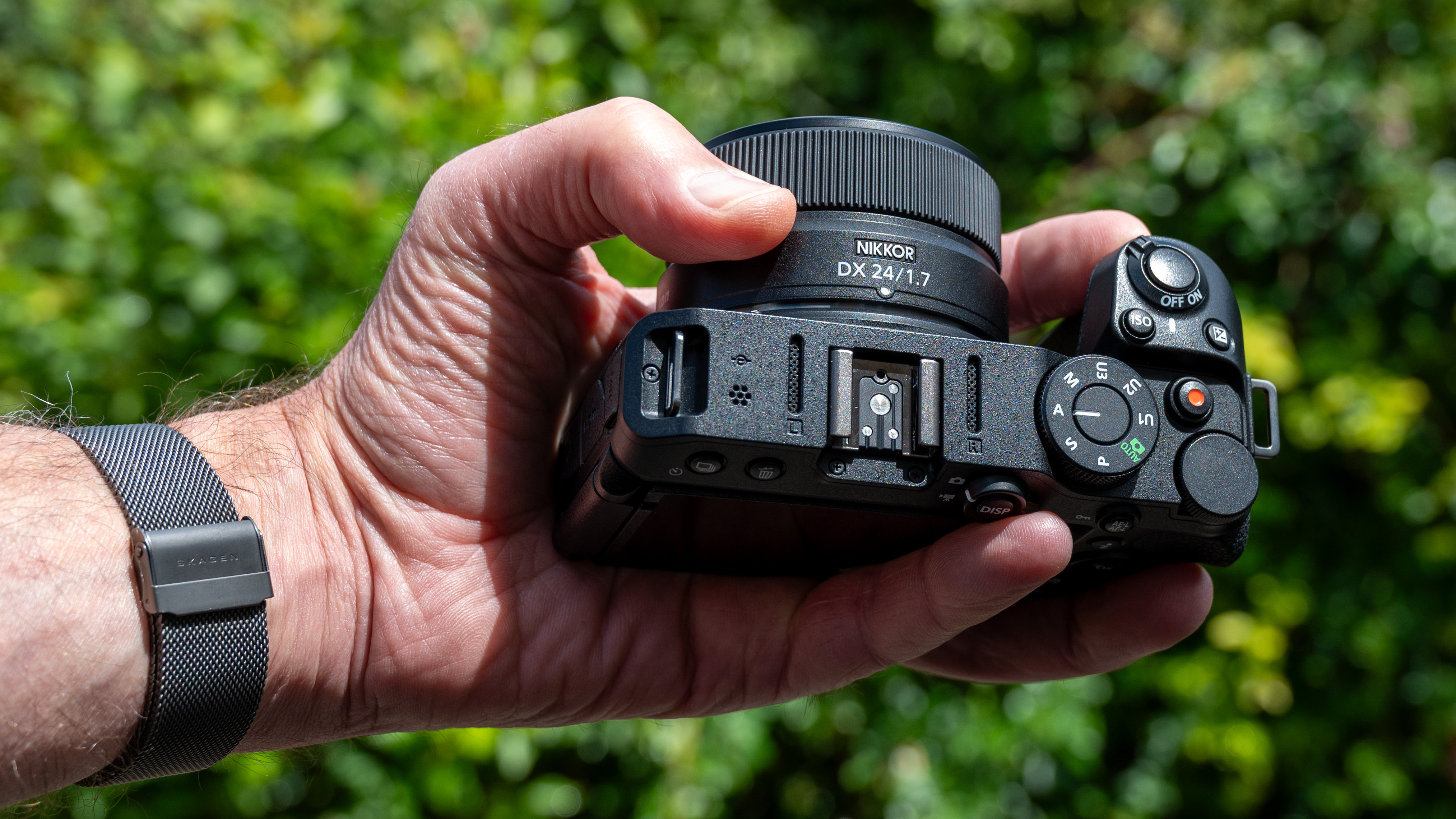
All in all, performance is very satisfying for such a compact and lightweight lens. Combined with any Z DX format camera, it creates an overall package that’s small enough to take anywhere and everywhere, helping to avoid missed photo opportunities because you left your big, clunky camera kit at home.
Sample images



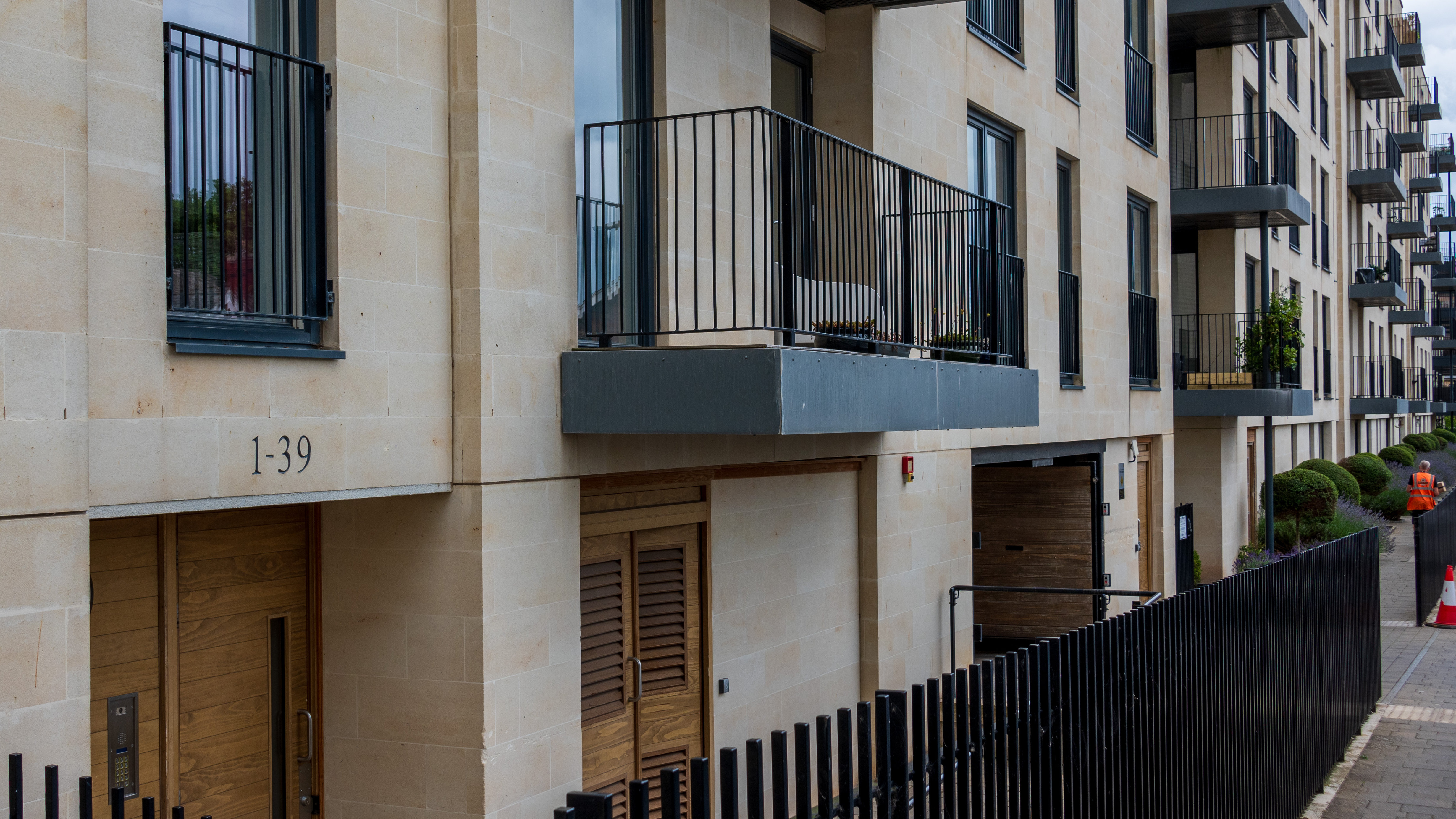


Lab results
We run a range of lab tests under controlled conditions, using the Imatest Master testing suite. Photos of test charts are taken across the range of apertures and zooms (where available), then analyzed for sharpness, distortion and chromatic aberrations.
We use Imatest SFR (spatial frequency response) charts and analysis software to plot lens resolution at the center of the image frame, corners and mid-point distances, across the range of aperture settings and, with zoom lenses, at four different focal lengths. The tests also measure distortion and color fringing (chromatic aberration).
Sharpness:
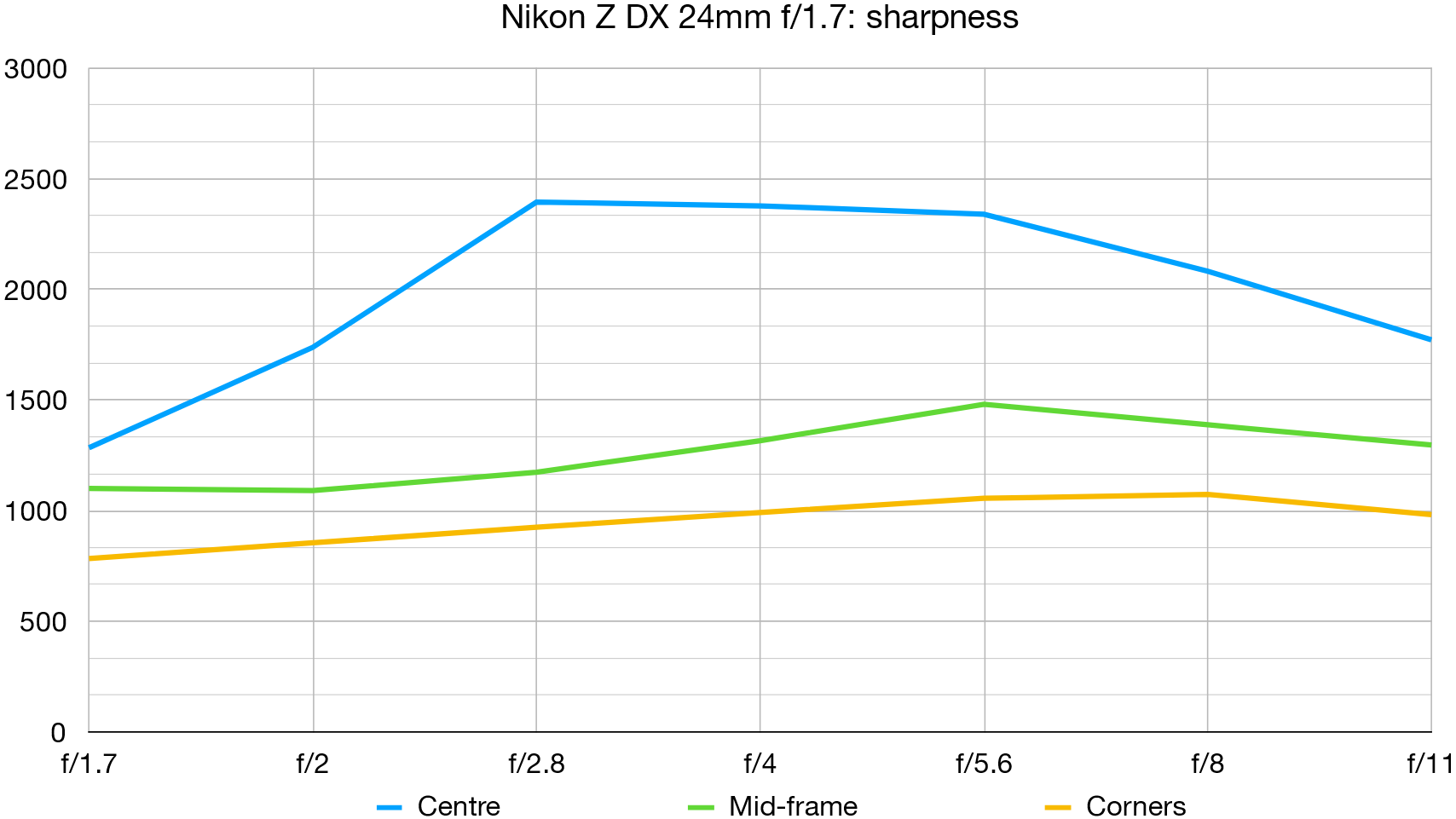
Sharpness wide open at f/1.7 is disappointing, even in the center of frame. You need to stop down to f/2.8 to get the best out of the lens, but then it really is capable of outstanding sharpness in the central region. Corner sharpness is comparatively average, however, though it's not helped by the relatively close distance of the lens to our lab test charts.
Fringing:
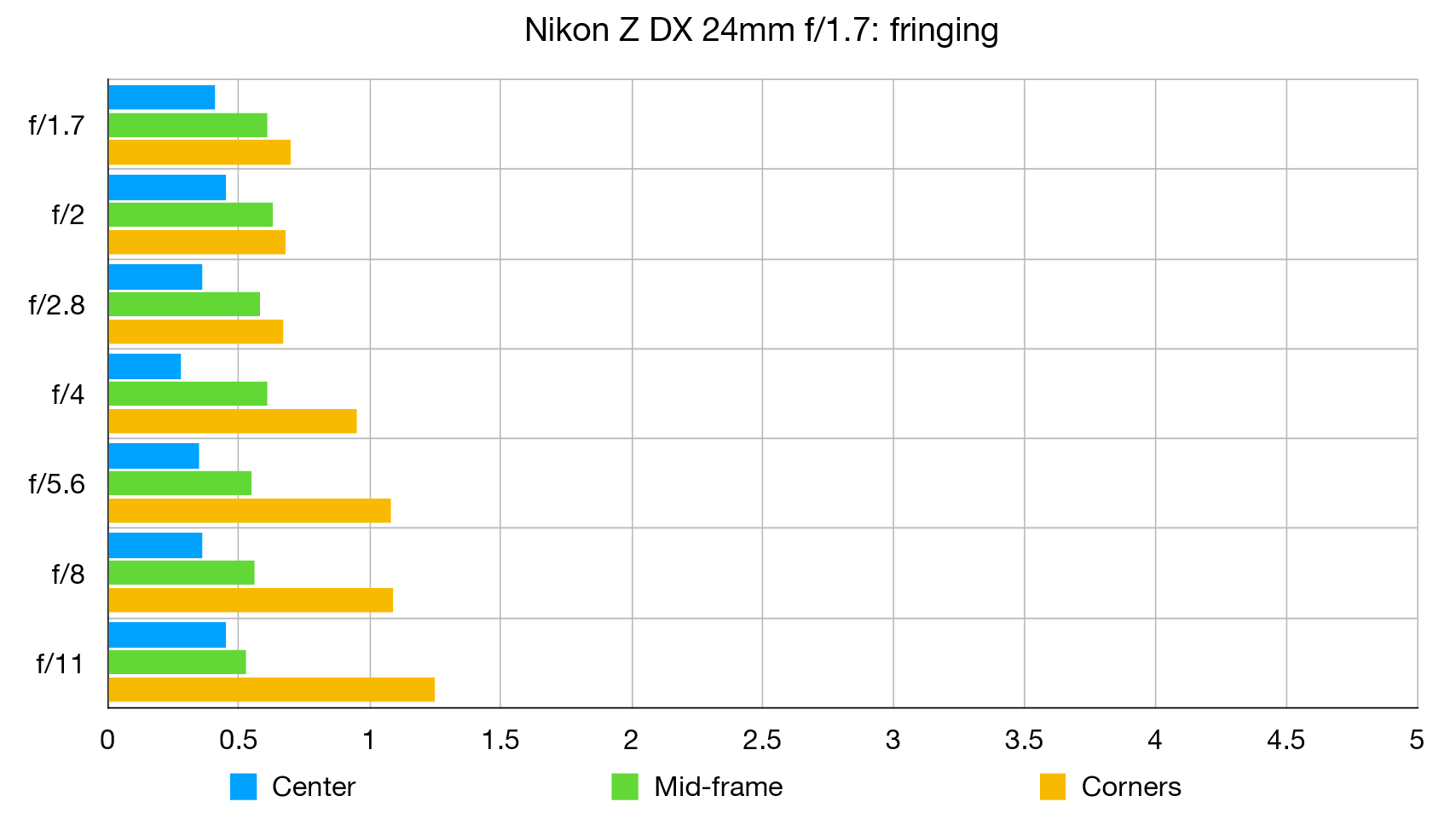
The lens does well to keep lateral chromatic aberration below a noticeable level most of the time. Only when you stop down to smaller apertures does it become visible in the corners of frame, but only just.
Distortion: 2.27
Oddly for a wide-angle lens, there's slight pincushion distortion visible in uncorrected raw files.
Verdict
With its compact and lightweight construction, and an ‘effective’ 36mm focal length in full-frame terms, this lens is the perfect companion to any Nikon Z DX camera body, ideal for street photography and walkabout shooting. Its bright aperture helps to enable a tight depth of field for close-ups, as well as quick shutter speeds even under low lighting conditions. All in all, it’s a very versatile lens with impressive performance at a competitive price.
Read more:
• Best camera lenses to get
• Best Canon lenses
• Best Nikon lenses
• Best Sony lenses
Matthew Richards is a photographer and journalist who has spent years using and reviewing all manner of photo gear. He is Digital Camera World's principal lens reviewer – and has tested more primes and zooms than most people have had hot dinners!
His expertise with equipment doesn’t end there, though. He is also an encyclopedia when it comes to all manner of cameras, camera holsters and bags, flashguns, tripods and heads, printers, papers and inks, and just about anything imaging-related.
In an earlier life he was a broadcast engineer at the BBC, as well as a former editor of PC Guide.
